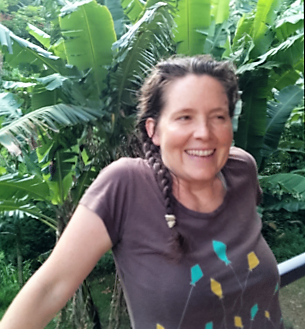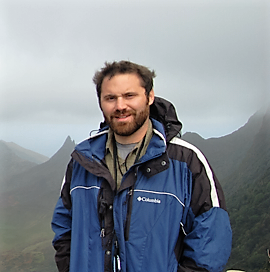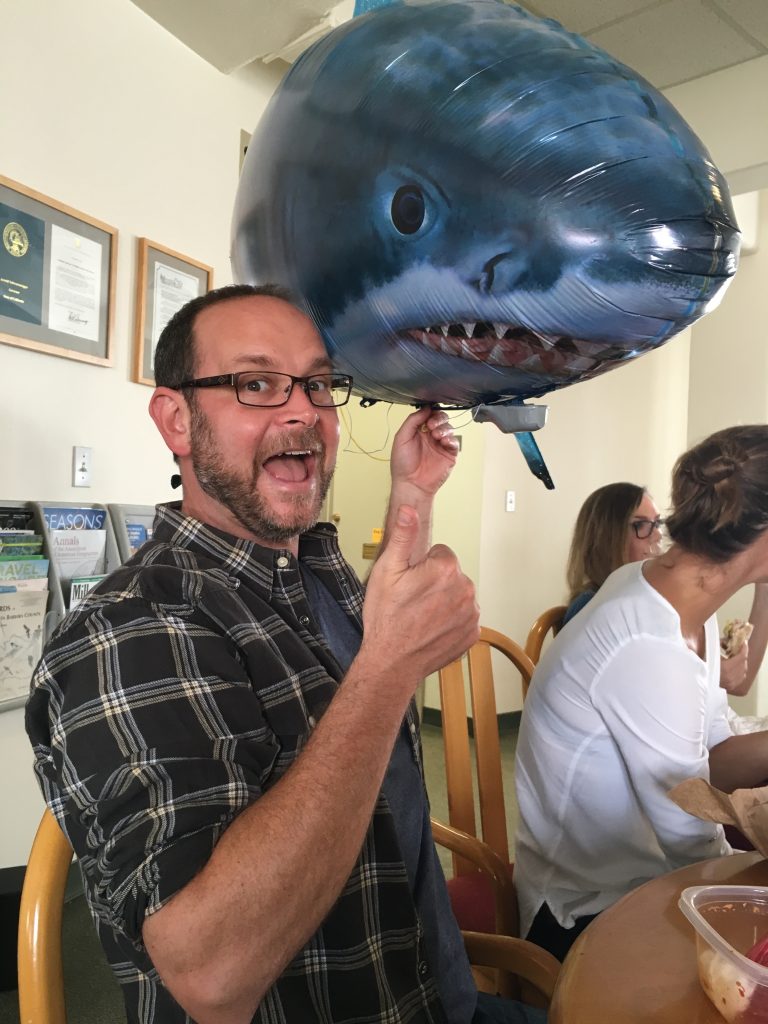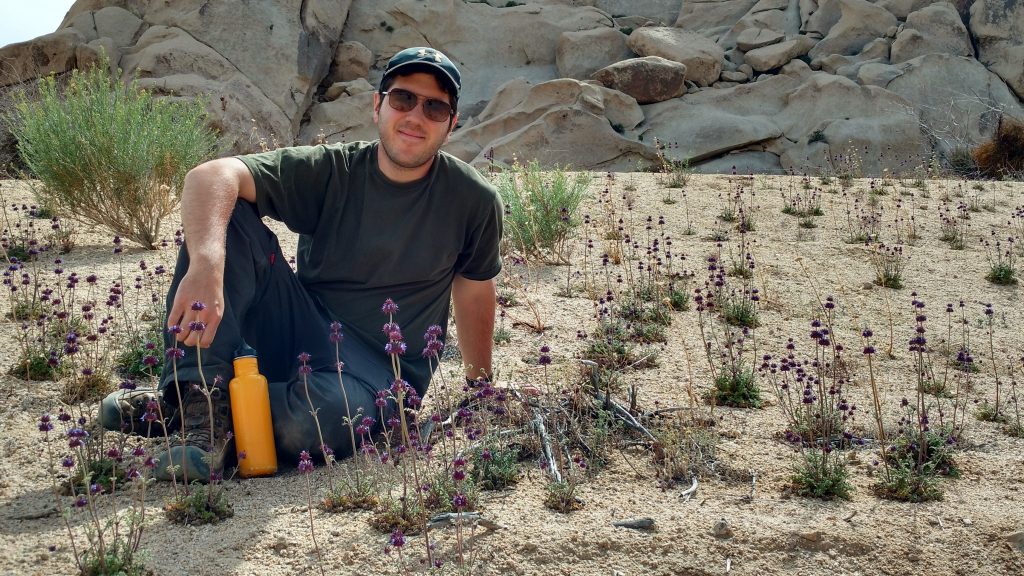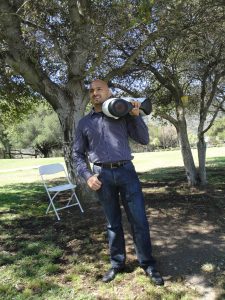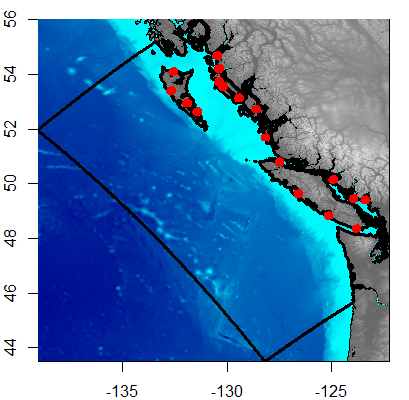Category Archives: presentation
Journalists’ insights into Science Communication with the Media [Wed. June 22]
Worried about getting on the phone with a journalist to talk about your research? Or–worse–that nobody will care enough to call? We’ll set you straight! In this talk, an editor and a writer offer insider tips on how to communicate science to the media. We’ll cover what makes research interesting to the media, how to prepare for an interview with a journalist, and how to best ensure your interviewer understands and writes about your research accurately. We’ll also talk about how to get your research in front of reporters’ eyes and how to maintain relationships with reporters. Anything else you’ve been dying to ask a journalist? We love questions, so there will be plenty of time for a Q&A.
Pacific Standard is a national magazine and website (psmag.com) based in Santa Barbara. (We’re right on Garden and De La Guerra!) We cover research-based solutions to issues of social, environmental, economic, and educational justice. Nick Jackson is Pacific Standard’s editor-in-chief. He previously worked as the digital editorial director at Outside magazine and as an associate editor at the Atlantic, where he launched theatlantic.com‘s health and technology channel. Francie Diep is a staff writer with Pacific Standard. She has a master’s in science journalism and previously worked as a contributing writer with Popular Science.
You can join remotely from your computer, tablet or smartphone.
https://global.gotomeeting.com/join/653578053
Or dial in using your phone.
United States : +1 (408) 650-3123
Access Code: 653-578-053
Nick Jackson (left)
http://nbjackson.com/
njackson@psmag.com or @nbj914 on Twitter
Francie Diep (right)
http://www.franciediep.com/
fcdiep@gmail.com or @franciediep on Twitter
Model-based assessment to inform ecology education & communication [Wed. June 8]
As children, we often make sense of nature and the world around us by relying on naive mental models, and all too often, these naive mental models are never corrected, exhibiting themselves as persistent scientific misconceptions: animals adapt to their surroundings so they can survive; plants get their food from the soil; removing a species from a food web affects only the species immediately above and below it in the web; humans have caused the majority of extinctions on Earth.
Science educators who recognize student misconceptions about fundamental scientific concepts can lead students to greater educational gains; science communicators who understand public misconceptions can lead their audience to deeper understanding of scientific issues. Physics education research has long leveraged the Force Concept Inventory (FCI), a model-based assessment of student understanding of classical Newtonian mechanics. The FCI has become a valuable tool for physics education, providing researchers with data to improve physics pedagogy and curricula. Since the development of the FCI two decades ago, other concept inventories have been designed to inform chemistry, physical science, and biology curricula as well.
In this talk, I propose the development of a Ecosystem Concept Inventory to examine how students, and the general public, understand fundamental models of ecology. I will make an argument for model-centered ecology education and how an Ecosystem Concept Inventory is a critical first step. I will lay out a series of simple models that I believe provide the fundamental structure for a scientifically literate understanding of ecology, and ask the audience for input and insights into developing a model-based assessment to inform ecology education and communication.
Casey O’Hara
Project Scientist, Ocean Health Index
National Center for Ecological Analysis and Synthesis
735 State Street, Suite 300, Santa Barbara CA 93101
ohara
Enhancing Conservation Outcomes and Improving Rangeland Monitoring Efficiency with RDMapper [Wed. June 1]
RDMapper is a web-based application that allows rangeland forage production to be tracked bi-weekly using remotely sensed MODIS vegetation indices. Combining these data with monthly precipitation data and annual on-the-ground monitoring records, RDMapper provides statistical and graphical information and context that supports predictions of end-of-season residual dry matter (RDM). RDM is a landscape-scale metric that has been shown to be a good predictor of rangeland productivity and overall rangeland condition, and is used by grazing managers to monitor grazing impacts, and by land trusts and agencies for conservation easement compliance monitoring. RDMapper can help reduce grazing-related compliance issues and potential conflict between landowners and easement holders, strengthening the overall relationship with cooperating landowners and leading to greater protection of biodiversity values. We developed RDMapper using software written in the R programming language, including the Shiny package. In 2015, we predicted compliance with RDM objectives across approximately 44,000 hectares of conservation easement lands held by The Nature Conservancy in California. We based predictions on past RDM compliance and our interpretation of statistics and graphics that demonstrate differences in vegetation indices and precipitation characteristics for years that were in versus out of compliance with RDM objectives. We tested a framework for adding efficiency to field-based RDM monitoring in future years by evaluating pastures that we had a high confidence would be in RDM compliance in 2015. For these pastures, our prediction of ‘in compliance with high confidence’ was correct on 109 of 110 pastures. We propose that in future years, pastures we are confident will be in compliance can be monitored with a simple visual estimate of RDM, instead of more expensive field methods. We are currently testing RDMapper at additional properties and have transitioned it to a more powerful data processing framework based on MODIS and PRISM web services and Google’s Earth Engine.
Scott Butterfield
Senior Scientist
The Nature Conservancy
scott_butterfield@tnc.org
Introduction to Marxan (hands on tutorial) [Wed. May 25]
Systematic conservation planning is the science of understanding which conservation interventions to enact, and when and where to do them given limited conservation budgets and the diverging needs of different stakeholders. This approach is fundamental to modern evidence-based conservation. In this workshop we’ll learn about the fundamental principles of systematic conservation planning, and discuss some examples of where it has been applied. This will be concreted with some simple tutorials using Marxan.
Claire Runge
runge@nceas.ucsb.edu
twitter: @Claire_Runge
Challenges of scale when examining plant-interactions in arid ecosystems: micro, local, & regional [Wed. May 18]
Alex Filazzola
PhD Student
York University
Toronto, Canada
alex.filazzola@outlook.com
Industrial Ecology: Material flows at the nature-industry boundary [Wed. May 11]
Achieving a sustainable industrial economic system is the defining challenge of our age, one that requires understanding both of human-made systems that generate stresses on the environment and of the natural systems that absorb them. Industrial ecology (IE) is a synthesis field that seeks to understand the sustainability implications of decisions made in the context of human systems (businesses, households, public agencies). The main organizing principle in IE research is the boundary that separates the natural environment from the domain of human activity (aka the “technosphere”). Though natural systems are necessarily spatial, human systems are often more readily thought of as graphs, where different activities happen at distinct points in order to satisfy demand for products and services in the economy.
I will introduce the core methodologies of IE, material flow analysis and life cycle assessment, describe data collection and analysis in comparison to the natural sciences, and discuss how the operational concerns of businesses influence how IE investigations are designed and how knowledge is shared.
Brandon Kuczenski, Ph.D.
Assistant Researcher
University of California at Santa Barbara
Institute for Social, Behavioral, and Environmental Research
Santa Barbara, CA 93106-5131
YouTube: not just for cat videos! Simple ways to create online videos that connect people to your science [Wed. May 4]
It is more important than ever to use video to communicate your science. After all, watching videos is one of the main ways – maybe the primary way – that people use the Internet. Scientists often assume that video is just for outreach, but it can also be used to further your research. But how do you create those videos? After all,
video production can be very equipment intensive (read expensive) and time consuming. Making things even more difficult, video production is not part of scientists’ training. However, advances in technology mean that creating compelling video can be done in less time and at much lower cost than before. This talk will focus on the techniques that
scientists can use to easily produce their own videos to further their science and for outreach.
Jai Ranganathan
jai.ranganathan@gmail.com
Center Associate
National Center for Ecological Analysis and Synthesis
Translating values over time/space: A continuum approach to reading records and data [Wed. April 27th]
The professional work of data and records creation occurs within a specific context that is bounded by a number of factors. These factors contribute to the shape, form, and other aspects of the data. This discussion will talk about translating and reading co-created data from a particular community of practice, and then turn to a broader conversation about evaluating the context of records.
Heather Soyka
Postdoctoral Research Fellow at DataONE
NCEAS
Santa Barbara, CA 93101
hsoyka@unm.edu
Optimizing Marine Protected Area Networks: The effects of climate change on larval dispersal and connectivity [Wed. April 20]
A changing climate will make the conservation of marine biodiversity increasingly difficult as policies designed for current climatic conditions may not reflect those in the future. Larval dispersal and movements among populations is a crucial factor in planning networks of Marine Protected Areas (MPA) as it greatly affects population persistence and recovery. I will present some of my work quantifying larval behavior in the laboratory, to using a biophysical larval dispersal model (ROMS/LTRANS, etc) to identify patterns of larval connectivity in the present and future climate scenarios. Identifying mechanisms that drive larval dispersal and connectivity, quantifying their sensitivity to climate change, and incorporating this into planning strategies are key to developing networks of MPAs which have sound design principles that consider population connectivity and are more robust to the effects of climate change.
Remi Daigle
Post-doctoral Researcher
University of Toronto, McGill University
https://remidaigle.wordpress.com/

